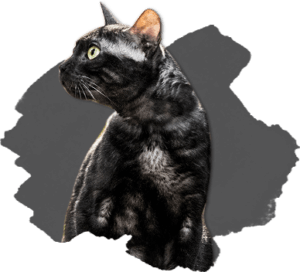

Bengal cats are a true marvel of nature! These hybrid felines are the result of crossing a domestic cat with a small wild cat called an Asian leopard, scientifically known as Prionailurus Bengalensis, that’s found in the Bengal region of Asia. The outcome of this union is a small leopard with a wild appearance and an amazing attitude, displaying the best qualities of both its wild and domestic parents. It’s no wonder why we chose Bengal cats for our cattery, considering their remarkable attributes. If you’re interested in learning everything there is to know about Bengal cats, continue reading below.

BENGAL CAT BREED ORIGIN
The first recorded instance of crossbreeding between the domestic cat and the Asian leopard was in 1963 by an American breeder, Jean S. Mill. This initial crossbreeding gave rise to the “F1” (1st generation) and “F2” (2nd generation) hybrid cats. After four to five generations, the Bengal cat was classified as “domestic.” Our breeding process involves developing kittens from the 7th and 8th generations after the Asian leopard, resulting in friendly and good-natured felines. While it took several years for the International Cat Association (TICA) to officially recognize the Bengal breed, Jean S. Mill couldn’t enter her first cat show until 1985. However, the breed quickly gained popularity and is now more beloved than ever.
BENGAL CAT COAT
The Bengal cat’s stunning fur, which resembles that of his forebears, is one of the first physical characteristics that most people notice about it. Rosettes are the splotches that may be observed all over his body. The cat looks unusual as a result. Unexpectedly soft and silky is how his fur feels when you stroke a Bengal cat. On occasion, we may glimpse “glitter,” a fine, sparkling veil on his body that resembles gold dust.
The Bengal kitten goes through a period of fuzzy fur, which may last for 3 to 5 months, beginning at the age of 3 to 4 weeks and making his fur and markings less contrasting. The Asian leopard, which is renowned for its ability to
This protects juvenile leopards from their natural predators. Another crucial aspect is that, contrary to what many people think, the Bengal cat breed is not hypoallergenic.
In the image, a fuzzy young cheetah is depicted.


BENGAL CAT PATTERNS AND COLORS
Spotted/rosetted and marble are the two patterns that the Bengal cat can have. The Bengal cat can also be found in a wide range of colors. Some are simply stunning! Some even imitate the black panther, snow leopard, and common leopard. The unique and stunning hues are what Wild N Sweet Bengals are known for. Learn about these stunning and unique Bengal cats.
BENGAL CAT LIFESPAN AND WEIGHT
The Bengal is categorized as a medium-sized to the giant cat. The adult Bengal cat weighs anywhere from 7 to 12 pounds for females and between 11 and 17 pounds for males. Their life expectancy ranges from 14 to 16 years.
ALWAYS IMPROVING THE BENGAL KITTEN CHARACTERISTICS
Breeders of Bengal cats, we are constantly striving to get better at everything. The objective is to come as near to the breed requirements as possible, which include having a beautiful color with contrasting rosettes, great flow, a wild head with a strong muscular body, short silky fur, a short thick tail, etc.
Obviously, there is no such thing as a perfect cat. But we’re always working to make one as close to flawless as we can.

